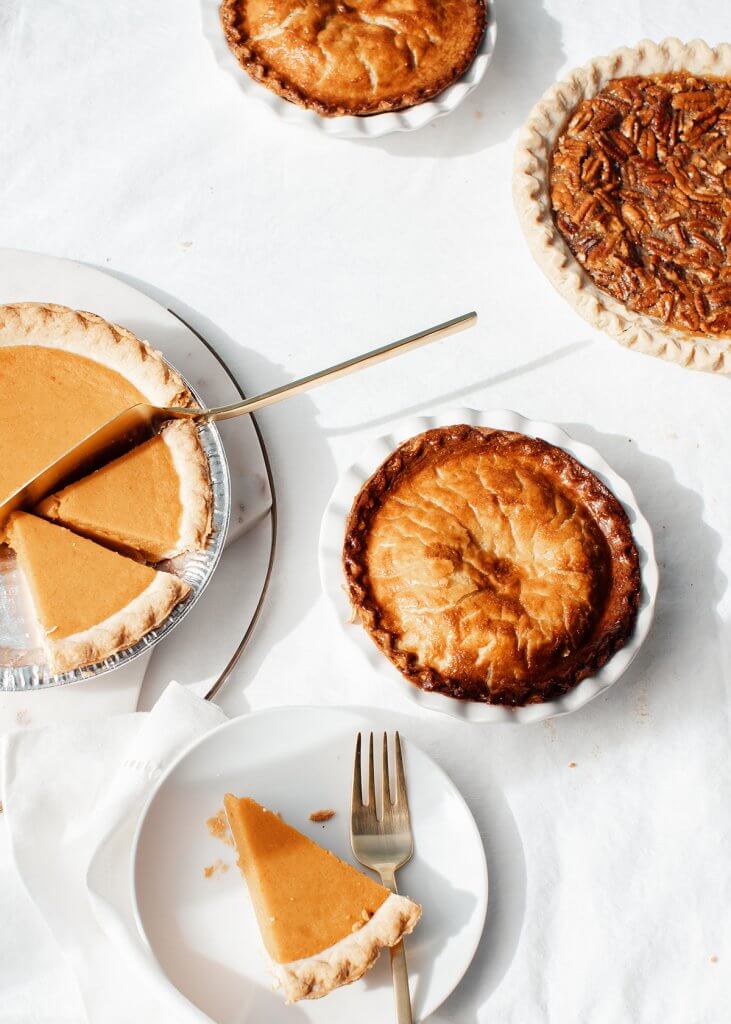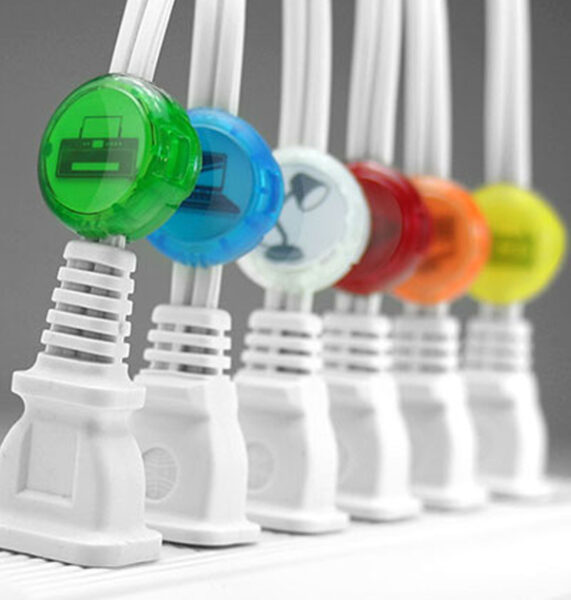How to enjoy without going overboard

‘Tis the season of abundance. Gift guides are beginning to flood our inboxes. Food magazines, their covers spread with lavish holiday tables, tempt us with irresistible ideas for roasts and pies. And there’s always that one house in the neighborhood that is already decked out in full twinkle lights and holiday regalia, complete with a replica of Santa’s sleigh and statues of all eight reindeer.
The holidays are a time for going a little over the top. If the rest of the year we try to curb our excesses and strive for moderation, during these last months of the year, it feels appropriate to let loose a little on the reins of our desires. As Maya Angelou once said in an interview with Oprah, “Moderation in all things. And even moderation in moderation. Don’t get too much moderation, you know?”
Yet there’s a line we walk with abundance, between a kind of heedless abandon, a permission to fully immerse in the object of our desires, and on the other hand, an excess that takes us beyond joy, one that is damaging to our health, our relationships, our sense of self. It feels good to let go, to take a break from counting calories, to give the “how could you?” gift, to linger the extra hour. But where is the boundary between joyful indulgence and the kind that leaves us feeling shameful come January, struggling to lose the extra pounds and pay off our credit cards? How do we stay on the line without going over the edge?

I’ve grappled with this as long as I’ve been alive. The sugar high and the eventual crash. The freshmen fifteen that I spent the whole summer trying to lose. The drinking which wasn’t exactly problematic but left me with a vague feeling of embarrassment most mornings, as I tried to figure out if I’d been more uninhibited than I intended. (More on that here.) I’ve flirted with this line, and more often than not, I’ve toppled right over the edge.
But recently I had a conversation that completely changed how I feel about that delicate line. I was talking to Sarah Copeland, former Real Simple food director and author of numerous cookbooks including her brilliant latest, Every Day is Saturday, for the Joy Makeover about joy and food. I brought up the topic of how we can enjoy food in a without going overboard, and Sarah shared a simple mindset shift that has made abundance feel far more accessible to me than it used to.
Sarah has done a lot of reflection around this question because, as she puts it, “I was a really chubby fifth, sixth, and seventh grader.” She recalls that she always loved food, but that around that time she got really into reading, and being less physically active, she began to put on weight. As she moved into high school, she cultivated healthier habits, but when she went to culinary school in her 20s, she began to worry that it would be easy to lose control with so much delicious food around her. Yet this didn’t happen.
Instead, she found herself looking at the bounty before her and thinking, “This is all here for me. This was all created in the world. Mother nature has just an abundant array of texture, color, flavor. If you just look at carrots alone or tomatoes alone, the color variations and shapes and flavors, and you just think ‘This is all here for me. It’s all here for you.'”
She continues, “But I don’t have to have all of it right now. And I don’t have it all in this moment, I don’t have to eat it all today. And maybe there are certain weeks or months or years when I don’t need any of it, but it’s there for me to have again if I want it.”
While so many philosophies of healthy living hinge on some form of deprivation, Sarah’s approach is rooted in abundance, and in particular, the abundance of sensations offered up by the world around us. There are times to indulge fully in that abundance. And then there are times to abstain from it while reminding ourselves that it still exists, and will still be there when we want it again. Abundance can unfold over time — it doesn’t all need to be consumed in a single moment.
What clicked for me in this conversation is that in times of abundance, many of us actually act from a place of scarcity. Part of this is our evolutionary heritage. Life on the savanna was feast or famine, and early humans who didn’t take advantage of a glut in resources by eating their fill and preserving as much of the excess as possible would have found themselves ill-equipped for the lean times. A scarcity mindset is an innate part of the human operating system.
But many of us have layers of conditioning that make our scarcity mindset deeper and more entrenched. If you or your family struggled with money, a scarcity mindset may have emerged to protect you from destitution. If you struggled with your weight, or had family members who made judgmental comments or tried to restrict your eating, this could also trigger a scarcity mindset. If you had to fight for attention, or affection, or to have any of your basic needs met, you might have internalized the idea that there isn’t enough of these desirable things to go around. And so when abundance comes along, the temptation is to binge and hoard, to consume as much as possible to allay that inner fear of scarcity.
The thing about a scarcity mindset is that it detaches us from our true desires. When we consume from this position, we’re not satisfying a craving, we’re trying to plug up a hole, one that no amount of consumption can fill.
So how do we know whether we’re savoring the joy of abundance or soothing the fear of scarcity? One thing that can help is specificity. Sarah offers an example from her own life. “I know how good a baguette is when it’s fresh and it’s amazing and it’s slathered with butter. I’ve had that experience. I want to have it again, but I don’t need to have that experience right now because I’m really excited to go to that wedding tonight where that famous cakemaker is making that amazing seven-layer cake. I want to have that.”
When the desire for more of something is specific, it’s rooted in a particular experience. We want that extra slice of pie because it’s pie season, or because this pie is so flaky and delicious we just want a little more of this delicious moment. We want to stay out past bedtime because the company is so good we don’t want the night, this particular night, to end. The specificity is a signal that we’re in touch with our desires, and that these desires have meaning to us.
When our motivation is more general, often it signals that a scarcity mentality might be taking hold. When the pie isn’t especially good, but it’s pie, and it’s here now, that’s a sign that we’re not eating out of joy, but as a rebellion against deprivation. In a moment of craving, try pausing to ask yourself: Do I want this specific thing? Or is there something I could get later that I’d want even more?
Another clue to the presence of a scarcity mindset is the underlying sense that nothing will never be enough. When you keep offering up your wine glass for a refill well beyond the point where you’re slurring your words, it’s worth asking what need you’re really trying to satisfy. If you’re eating the second slice of pie and already thinking about the third, maybe it’s not actually about the pie.
Dealing with a deep-seated scarcity mindset may be best handled through therapy, where you can safely explore the roots of these fears with a capable practitioner. In the meantime, though, reminding yourself of abundance be a way to interrupt the default scarcity responses and reassure your unconscious mind that there really is enough to go around.
For me, the mindset shift Sarah describes has been profound. It has taken a lot of self-judgment and ambivalence out of my daily life. Rather than guiltily indulging in a treat and then feeling immediately bad about my choice, I feel permission to truly enjoy something decadent, because I know that it’s a specific choice related to the joy of the moment. And I when I choose to abstain from something I want, I don’t feel like I’m depriving myself, because I know it’s a real choice. Even if I’m not partaking of something, I know that it exists in this abundant world, and it will be there for me, one day, when I truly want it.
As we go into the holidays, I wanted to share this in the hope that it helps you feel more permission to experience the joys of the season without fear of losing control, and without the judgment that so often colors our experiences of abundance.
This post was inspired by my conversation with Sarah Copeland as part of the Joy Makeover, a free program designed to help you find more joy in every aspect of your life. This conversation was full of gems, and has radically changed the way I cook and eat — you can watch the whole thing on the Joy Makeover site!





Discussion (5 Comments)
Thanks so much for reminding me, I live with such abundance. I have recently found two ways to look at food: 1. First be grateful to be receiving when I am able to indulge in a special abundance. 2. When I start in on some special dish that does not live up to expectations, I do not feel I have to finish it. Thanks again! Vita abundantior
I love this, Betsy. I feel the same way about books. If it is not satisfying, move on. Life is too short and there are too many wonderful books out there to waste time on ones that don’t make your heart sing!
Beautifully expressed – this fills me with gratitude and joy just reading it!
Thank you, Nancy! I appreciate you letting me know.
Thank you for sharing this! I love this idea, and it really clicked for me once I realized I use this same principle of thought while shopping for homewares, clothes, etc. I didn’t realize until reading this that I shop with an abundance mindset! It’s so gratifying to know I’ve unconsciously added joy into my life. I’m excited to apply this mindset to eating well.
When I’m out shopping for something, there’s always something else in the store that I like and I used to think “It’s only (insert a small amount of money), I might not find it again, I’ll just buy it.” Later, I’d feel disappointed in myself and wonder why I didn’t have more willpower. After tidying up using Marie Kondo’s book (and reading Joyful!), I made the commitment to only add joy to my home and life. I realized impulse buying rarely (if ever) brought joy into my life. Now, when I’m shopping and see something I didn’t plan for or look for that day, I think, “I can find something like this again, if I ever want it.” And it’s always held true.